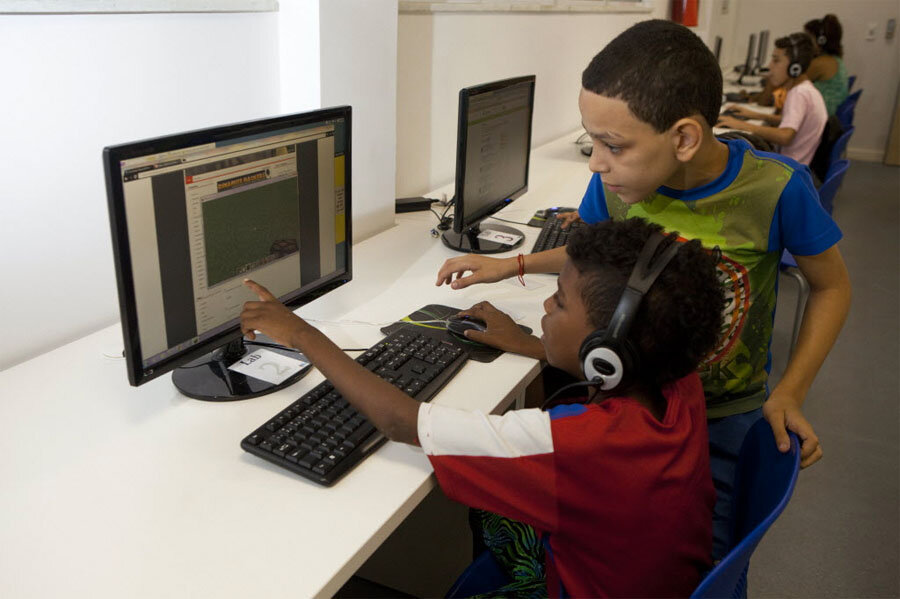Child labor: Number of children involved is shrinking every year
Loading...
Countries worldwide are cracking down on employers who target, hire, and abuse children. Eleven percent of the world’s children – about 168 million – are currently subjected to child labor, but this number is shrinking every year. Between 2000 and 2012 the number of children involved in child labor was cut by one-third, according to a 2013 report released by the International Labor Organization (ILO), a United Nations agency. Inspired by the progress shown in the report, some countries are increasing their efforts to eliminate child labor.
In October, 25 Latin American and Caribbean countries signed on to a regional initiative to end all forms of child labor within their boundaries by 2020. Noortje Denkers, technical secretariat of the new initiative, part of the ILO’s International Program on the Elimination of Child Labor, says that most of the countries involved already have policies, laws, and best practices to fight child labor. She believes the new initiative is the best way to strengthen the measures already in place to eliminate child labor faster.
“We are doing well, but there should be more urgency. We should accelerate the pace, otherwise it will take us forever to reach our goals,” Ms. Denkers says.
The initiative aims to streamline funds so that a country’s policies can be carried out at the local level, law enforcement agencies can be trained to better identify children who are being manipulated by employers, and monitoring systems can be developed for children who are taken out of labor to ensure they stay out and are integrated into the educational system.
While there are fewer children involved in child labor every year, the rate at which child labor is decreasing is slowing down at both the global and regional levels. The Latin American initiative started after the 25 nations involved realized that if progress in reducing child labor continued at its current rate, it would take 40 years for it to be eradicated. Denkers says some factors that led to the period of stagnation on child-labor reduction include faltering economies and high child poverty.
“Child labor is not an isolated thing; it causes and is a consequence of poverty,” she said. “It is interrelated with many issues and affects the child, family, country, and socioeconomic growth of the region.”
Leaders of the new initiative aren’t willing to take the slow route to eliminating child labor because they believe a lot is at stake. Of the 12.5 million children who face child labor in the region, 9.5 million face it in what the ILO describes as its “worst” forms, including slavery, drug trafficking, and labor in hazardous conditions. The leaders also do not see their regional effort to end child labor as distinct from what is happening in other countries, and hope making a firm commitment will encourage others to do the same.
“The initiative is part of a global effort to restore the rights of 168 million children and adolescents affected by the scourge of child labor,” said Guy Ryder, director general of the ILO, when the countries met in October.
Latin America and the Caribbean is the region with the third highest incidence of child labor in the world, falling behind the Asia-Pacific region and sub-Saharan Africa, which has the highest. While sub-Saharan Africa has seen a significant decline in child labor over the years, it is now also seeing a lag in the rate at which it is being eliminated. In 2008, it accounted for 30 percent of all 5-to-17-year-olds in the world who faced child labor. In 2012 it accounted for 35 percent. The ILO’s report suggests that governments in sub-Saharan Africa need to slate the fight against child labor into their political agendas in order to reduce it consistently and efficiently.
Another challenge the ILO notes in its report is the way in which global child labor trends are changing. The largest share of child laborers (59 percent) work in the agriculture sector. But recently, the use of children in the services sector has increased. Since the 54 million children who work in the services sector worldwide are mostly out of public view, it is becoming even more difficult to regulate employers and conduct inspections.
But despite a constantly changing landscape, leaders of the new initiative in Latin America and the Caribbean believe their goal to take the region’s 12.5 million children out of child labor by 2020 is worth setting. “Even if the overall number of children in child labor has gone down, there’s still 12-1/2 million reasons to keep child labor on the agenda,” Denkers says.







